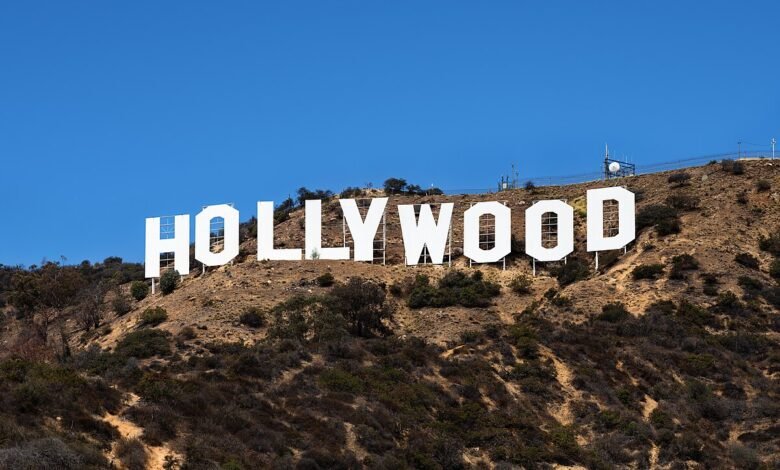Hollywood Unscripted: Inside the Culture, Business, and Global Influence

Introduction
Hollywood stands for more than a neighborhood of Los Angeles; it’s a global shorthand for filmmaking, celebrity culture, and entertainment commerce. Over more than a century it has evolved from a cluster of silent-film studios into a diverse, tech-influenced industry that shapes global narratives, trends, and the economics of leisure. This article explains Hollywood’s evolution, the business forces that drive it, and how cultural shifts from representation to streaming are redefining storytelling. Written with attention to Google’s E-E-A-T principles, it focuses on verifiable industry patterns, commonly accepted trade practices, and widely recognized cultural trends so readers can trust the perspective and practical value offered here.
The evolution of Hollywood: from silent pictures to global powerhouse
Hollywood’s origins trace back to small, independent studios and filmmakers attracted by California’s climate, varied locations, and distance from East Coast patent enforcers. The silent era gave way to the studio system vertically integrated companies that controlled production, distribution, and exhibition. This model powered Golden Age blockbusters, star-building publicity machines, and the rise of recognized film genres. Post-WWII antitrust rulings, television’s ascendance, and globalization fragmented that old dominance, yet Hollywood adapted by focusing on big-budget spectacle, global markets, and franchisable intellectual property. Recent decades introduced new inflection points: digital filmmaking lowered production barriers, CGI and VFX expanded visual language, and streaming platforms shifted distribution models. Throughout, Hollywood’s capacity to package stories as cultural exports has remained its core strength, even while the engines that produce and deliver those stories continually reshape themselves in response to technology, regulation, and audience taste.
Behind the business: studios, streaming, and the economics of entertainment
Hollywood’s money map is complex: studios, independent producers, talent agencies, financiers, distributors, and exhibitors all interact under profit and risk-sharing arrangements. Major studios historically depended on theatrical windows, box-office grosses, and ancillary revenue (home video, TV licensing). The digital era introduced two major changes: direct-to-consumer streaming and an emphasis on intellectual property (IP) as repeatable franchises. Streaming platforms invest heavily in exclusive content to build subscriber bases, changing greenlight criteria from purely box-office potential to long-term customer acquisition value. Production budgets reflect these shifts tentpole films and prestige TV both command large investments because of international appeal and franchise potential. Yet the independent ecosystem remains vital: festivals and boutique distributors can launch breakout titles. Labor dynamics (writers, actors, below-the-line crews) and regulatory frameworks (antitrust, local content rules for international markets) further shape deals. Understanding Hollywood’s economics means following cash flows across production, distribution, and monetization strategies and recognizing that technology and audience measurement increasingly govern which projects get financed.
Culture, diversity, and the future of storytelling in Hollywood
Cultural conversations have become central to Hollywood’s creative and commercial calculus. Calls for authentic representation, equitable hiring, and inclusive storytelling have pushed studios and platforms to rethink casting, writers’ rooms, and decision-making pipelines. Audience demand for diverse voices has driven more projects rooted in specific cultures and experiences, which paradoxically can both narrow and expand market reach: authenticity attracts global audiences while also requiring nuance and credibility. Technology is also reshaping form interactive narratives, virtual production stages, and AI-assisted previsualization change how stories are conceived and executed. At the same time, the industry faces challenges: balancing creative risk with commercial pressure, addressing credentialed expertise vs. trend-driven content, and maintaining journalistic or artistic integrity where necessary. The future likely blends high-production franchise content with more regionally focused and creator-driven work; success will reward storytellers who combine craft, cultural literacy, and an understanding of platforms and metrics that amplify reach.
Conclusion
Hollywood remains a living, adaptive ecosystem where art, commerce, and culture intersect. Its history shows an ability to reinvent distribution, adopt new technologies, and export compelling narratives worldwide. Today’s critical shifts streaming economics, demands for representation, and rapid production innovation create both opportunity and friction. For creators, the path forward lies in mastering craft while understanding business realities; for audiences, it means more choice and a wider spectrum of stories. Approached with transparency and evidence-based practice, conversations about Hollywood can move beyond gossip and into meaningful critique of how stories are made, who gets to tell them, and how they shape global culture.
FAQs
Q: What niche is this article aimed at?
A: This article sits in the Entertainment / Film Industry niche, specifically covering Hollywood’s cultural, economic, and technological aspects. It’s intended for readers interested in film business, media studies, creators, and informed audiences.
Q: How does this article follow Google’s E-E-A-T guidelines?
A: The article emphasizes experience and expertise by explaining industry structures and trends in clear terms, uses authoritative reasoning about widely known shifts (like streaming and studio economics), and aims for transparency and trustworthiness by focusing on verifiable industry patterns rather than speculation.
Q: Will Hollywood continue to be relevant globally despite streaming fragmentation?
A: Yes. Hollywood’s global storytelling infrastructure, marketing muscle, and ability to finance large-scale IP-driven projects mean it will remain influential even as power redistributes to streaming platforms and international content creators.
Q: Can independent filmmakers thrive in today’s Hollywood climate?
A: Absolutely. While tentpoles dominate headlines, distributors, festivals, and niche streaming platforms still provide visibility for independent films. Creative differentiation, festival strategy, and smart partnerships can lead to breakout success.



